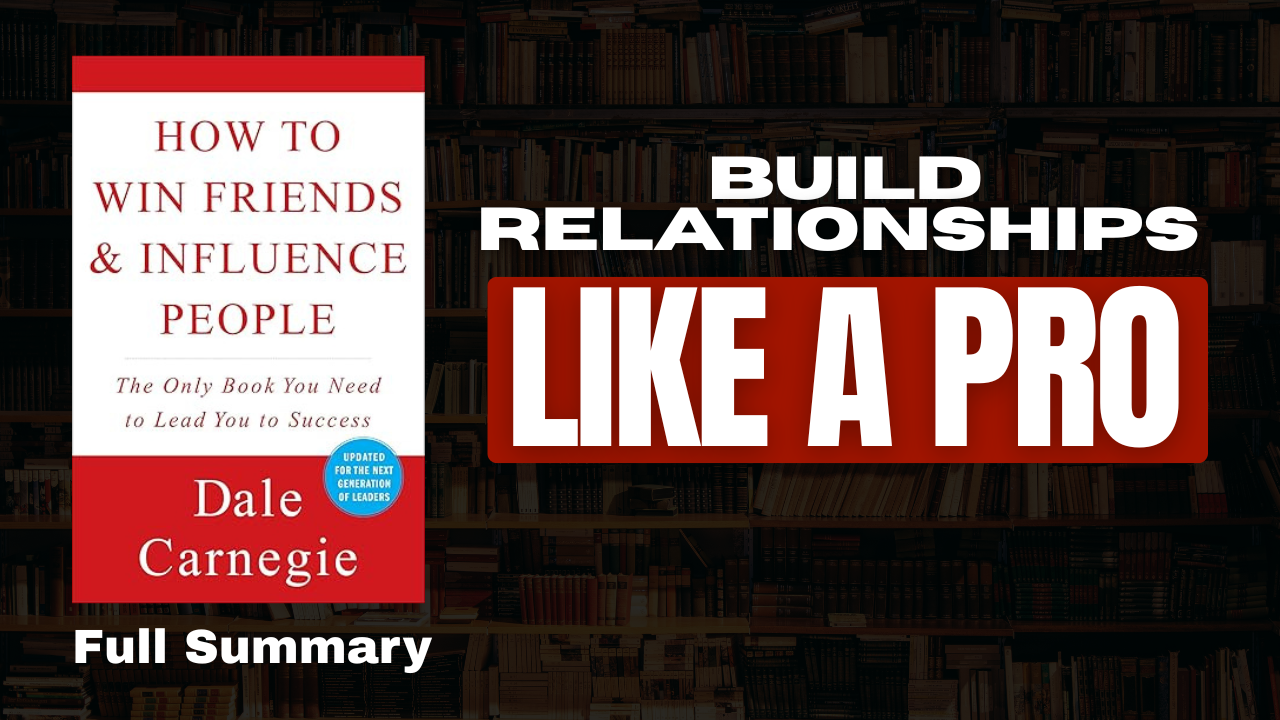Hey there! If you’ve ever wondered how some people effortlessly connect with others, inspire trust, and influence decisions, then Dale Carnegie’s How to Win Friends and Influence People is a book you need to read — or at least watch this summary!
Published over 80 years ago, this classic has helped millions transform their social skills and become more successful in both personal and professional life. Today, I’m breaking down its key principles into simple, actionable tips you can start using right now.
Ready? Let’s dive in!
1. Don’t Criticize, Condemn, or Complain
Criticism pushes people away. Instead, try to understand and empathize with others.
Example: When a colleague makes a mistake, avoid blaming. Instead, offer support and constructive guidance.
2. Give Honest and Sincere Appreciation
Everyone wants to feel valued. Genuine appreciation motivates better than flattery.
Example: Thank a friend specifically for their help or kindness, and mean it.
3. Arouse in the Other Person an Eager Want
To influence someone, focus on what they want, not just what you want.
Example: If you want a favor, explain how it benefits them.
4. Become Genuinely Interested in Other People
Show authentic curiosity about others’ lives and feelings.
Example: Ask about their passions and listen carefully.
5. Smile
A simple smile makes you approachable and friendly.
Example: Smile when meeting new people to create a positive impression.
6. Remember That a Person’s Name Is to That Person the Sweetest Sound
Use names during conversations to build rapport.
Example: Repeat someone’s name naturally to show attention.
7. Be a Good Listener and Encourage Others to Talk About Themselves
People love sharing their stories. Listen actively and encourage them to open up.
Example: Nod, ask follow-up questions, and avoid interrupting.
8. Talk in Terms of the Other Person’s Interests
Relate to others by focusing on what matters to them.
Example: Use hobbies or passions as conversation starters.
9. Make the Other Person Feel Important — and Do It Sincerely
Everyone wants to feel valued and respected. Give honest compliments.
Example: Praise a teammate’s effort sincerely.
10. Avoid Arguments and Respect Opinions
Arguments often hurt relationships. Respect differing views even when you disagree.
Example: Use gentle language to share your perspective.
11. Admit Your Mistakes Quickly and Emphatically
Owning your errors builds trust and credibility.
Example: Say, “I was wrong about that,” and move forward.
12. Begin in a Friendly Way
Start conversations warmly to lower defenses.
Example: Smile, greet warmly, and show kindness.
13. Get the Other Person Saying “Yes” Early
Begin with points they agree on to build consensus.
Example: “We both want the best for the team, right?”
14. Let the Other Person Do Most of the Talking
Listening more makes people feel heard and valued.
Example: Ask open questions and let them share their thoughts.
15. Let the Other Person Feel the Idea Is Theirs
When people own ideas, they support them more enthusiastically.
Example: Ask guiding questions that lead to your solution.
16. Lead with Praise, Gently Correct, and Help Others Save Face
Give honest praise before offering feedback. Be gentle when addressing mistakes and allow others to maintain dignity.
Example: “You did great here, and here’s a suggestion that could make it even better.”
Grab How to Win Friends and Influence People here: https://amzn.to/4eGWFB2
Final Thoughts
Dale Carnegie’s principles are simple but powerful. They remind us that respect, empathy, and genuine interest are the foundation of influence and lasting relationships. Start practicing these today, and watch your social and professional life transform.
Did this summary help you?
Check out the full video on BookLume for more insights, subscribe for daily personal growth wisdom, and share your favorite tip in the comments!

